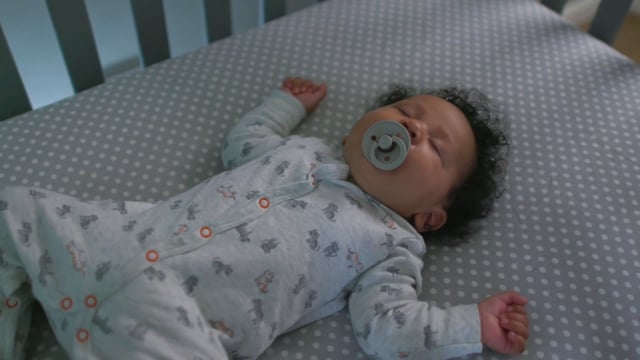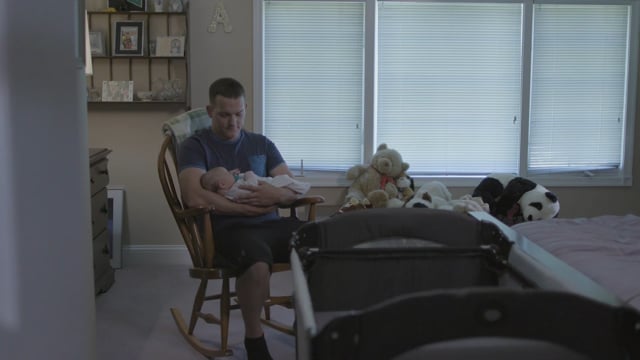- Parents Home
- Para Padres
- A to Z Dictionary
- Allergy Center
- Asthma
- Cancer
- Diabetes
- Diseases & Conditions
- Doctors & Hospitals
- Emotions & Behavior
- First Aid & Safety
- Flu (Influenza)
- Food Allergies
- General Health
- Growth & Development
- Heart Health & Conditions
- Homework Help Center
- Infections
- Newborn Care
- Nutrition & Fitness
- Play & Learn
- Pregnancy Center
- Preventing Premature Birth
- Q&A
- School & Family Life
- Sports Medicine
- Teens Home
- Para Adolescentes
- Asthma
- Be Your Best Self
- Body & Skin Care
- Cancer
- Diabetes
- Diseases & Conditions
- Drugs & Alcohol
- Flu (Influenza)
- Homework Help
- Infections
- Managing Your Weight
- Medical Care 101
- Mental Health
- Nutrition & Fitness
- Q&A
- Safety & First Aid
- School, Jobs, & Friends
- Sexual Health
- Sports Medicine
- Stress & Coping
Baby Sleep: 8- to 12-Month-Olds
Sleeping Routines & Schedules
How Much Sleep Do 8- to 12-Month-Olds Need?
Most babies 8, 9, 10, 11, and 12 months old should sleep 12–16 hours per day, including a stretch of 9–12 hours at night. Your baby will likely still take two naps per day. Some babies nap for 30 minutes, while others nap for up to 2 hours.
Sleep Safety
Where Should My Baby Sleep?
The American of Academy of Pediatrics (AAP) recommends room-sharing without bed-sharing until the first birthday or for at least 6 months, when the risk of SIDS (sudden infant death syndrome) is highest.
Room-sharing is when you place your baby's crib, portable crib, play yard, or bassinet in your own bedroom instead of in a separate nursery. This keeps your baby nearby and helps with feeding, comforting, and monitoring your baby at night.
While room-sharing is safe, putting your baby to sleep in bed with you is not. Bed-sharing increases the risk of SIDS and other sleep-related deaths.
Providing a Safe Sleep Space
Follow these recommendations for a safe sleep environment for your little one:
- Use a safe sleep position. Always place babies on their back to sleep, not on their stomach or side. The rate of SIDS has gone way down since the AAP began recommending this in 1992. When babies consistently roll over from front to back and back to front, it's fine for them to remain in the sleep position they choose.
- Use a firm, flat sleep surface. Cover the mattress with a sheet that fits snugly.
- Keep the sleep area clear. Do not put anything else in the crib or bassinet. Keep plush toys, pillows, blankets, unfitted sheets, quilts, comforters, sheepskins, and bumper pads out of your baby's sleep area.
- Prevent overheating. To avoid overheating, dress your baby for the room temperature and don't overbundle. Don't cover your baby's head while sleeping. Watch for signs of overheating, such as sweating or feeling hot to the touch.
- Avoid exposure to smoke. Keep your baby away from smokers. Secondhand smoke increases the risk of SIDS.
- Consider a pacifier. Offer a pacifier to your baby at sleep time, but don’t force it. If the pacifier falls out during sleep, you don’t have to replace it. If you're breastfeeding, wait until breastfeeding is firmly established.
- Remove hazards. Watch out for other hazards, such as items with cords, ties, or ribbons that can wrap around a baby's neck, and objects with any kind of sharp edge or corner. Look around for things that your baby can touch from a seated or standing position in the crib. Hanging mobiles, wall hangings, pictures, draperies, and window blind cords could be harmful if they are within a baby's reach.
- Use approved sleep products. Make sure that all sleep surfaces and products you use to help your baby sleep have been approved by the U.S. Consumer Product Safety Commission (CPSC) and meet federal safety standards. Also:
- Don’t let your baby fall asleep on a product that isn’t specifically designed for sleeping babies, such as a sitting device (like a car seat), a feeding pillow (like the Boppy pillow), or an infant lounger (like the Dock-a-Tot, Podster, and Bummzie).
- Don’t use products or devices that claim to lower the risk of SIDS, such as sleep positioners (like wedges or incliners) or monitors that can detect a baby’s heart rate and breathing pattern. No known products can actually do this.
- Don’t use weighted blankets, sleepers, or swaddles on or around your baby.

Safe Sleep for Babies
Keeping your baby safe is your first priority. Learn how to safely put your baby down for a nap, or at bedtime, to help prevent sudden infant death syndrome (SIDS).

Helping Your Baby Sleep
Many sleep-deprived parents ask how to get their babies to be better sleepers. Learn what you can do to encourage sleep, what's normal in the first year, and when your little one might sleep through the night.
How Can I Make Bedtime Easier?
Have a Soothing Bedtime Routine
You may have started a bedtime routine that you're sticking to. If you haven't yet, now's a good time to start. Soothing activities that lead up to "night-night" time can help relax your baby. A warm bath followed by stories or singing will signal an end to the day, and these same activities can be used at bedtime for years to come.
Help Your Baby Learn to Fall Asleep
You'll want your baby to fall asleep without your help. This may mean doing your nighttime routine and putting your baby into the crib while your little one is drowsy but still awake. If your baby cries, stay away for a few minutes. Your baby may settle down and go to sleep.
If the crying continues, soothe your baby for a moment without picking your little one up. This may go on a few times until your baby figures out that the crying is not getting results. This can be tough for parents, since it's upsetting to hear your baby cry. If you know your baby is safe (and not hungry, wet, soiled, or feeling unwell), it's OK to give them time to settle down.
If your child keeps on crying and calling for you, a few loving words from the bedroom door ("Mommy's right here, but it's time for you to go to sleep now.") and another quick exit may do the trick. Try to lengthen the time between these personal appearances until — at long last — your baby is asleep.
Why Does My Baby Wake at Night?
Sleep problems are common in the second half of a baby's first year. Some babies may call out or cry in the middle of the night, then calm down when a parent enters the room. This is due to separation anxiety, a normal stage of development that happens during this time. Even a baby who has been sleeping through the night will sometimes wake in the wee hours, just as adults do.
When your baby wakes up in the night and cries for you, reassure your little one quietly that you're there. Then send the message that your baby needs to go back to sleep. Your best bet might be a soothing pat on the back and a quick exit. If you are firm and consistent about teaching your baby to go back to sleep without you, this stage should pass pretty quickly.
Remember: Cuddling, feeding, or talking when your baby wakes up may prompt your little one to wake regularly for this attention.
When Should I Call the Doctor?
It can be hard to respond to your baby's needs with the right balance of concern and consistency. But this is the time to set the stage for future restful nights for the whole family.
If you have questions about your baby's sleep, talk with your doctor.

© 1995- The Nemours Foundation. KidsHealth® is a registered trademark of The Nemours Foundation. All rights reserved.
Images sourced by The Nemours Foundation and Getty Images.